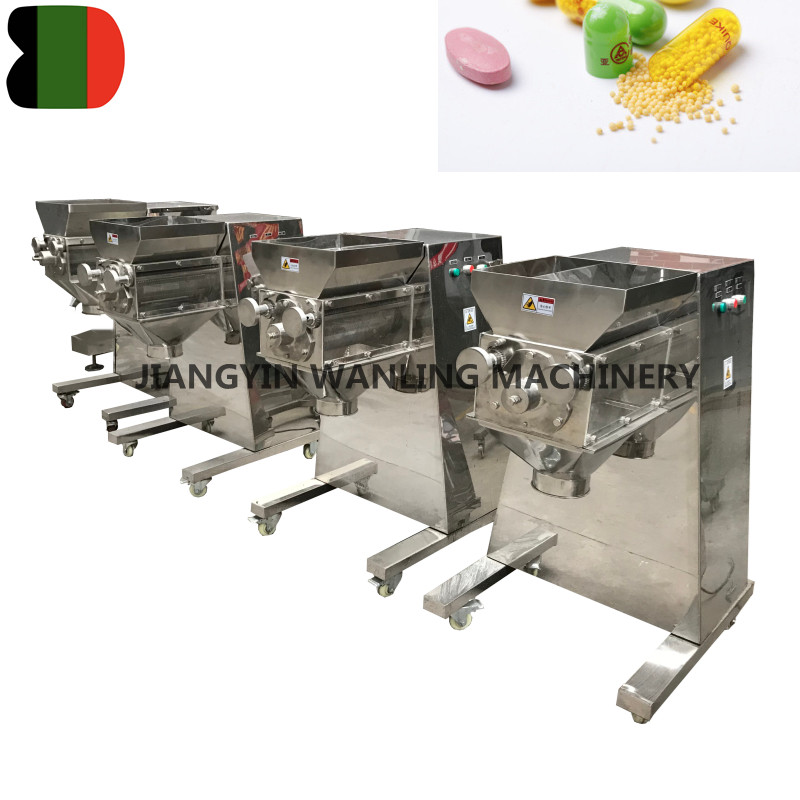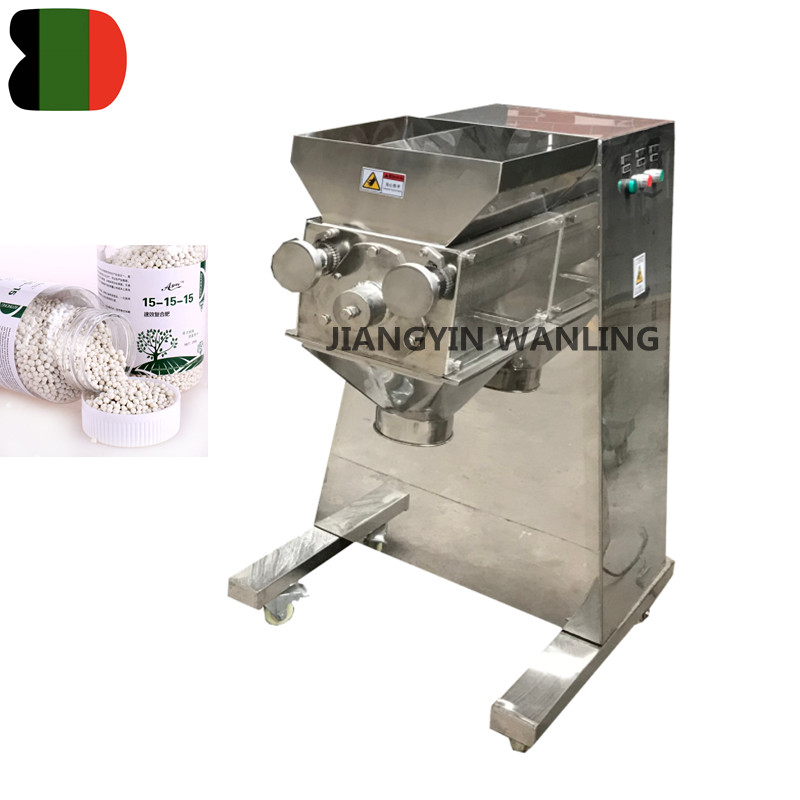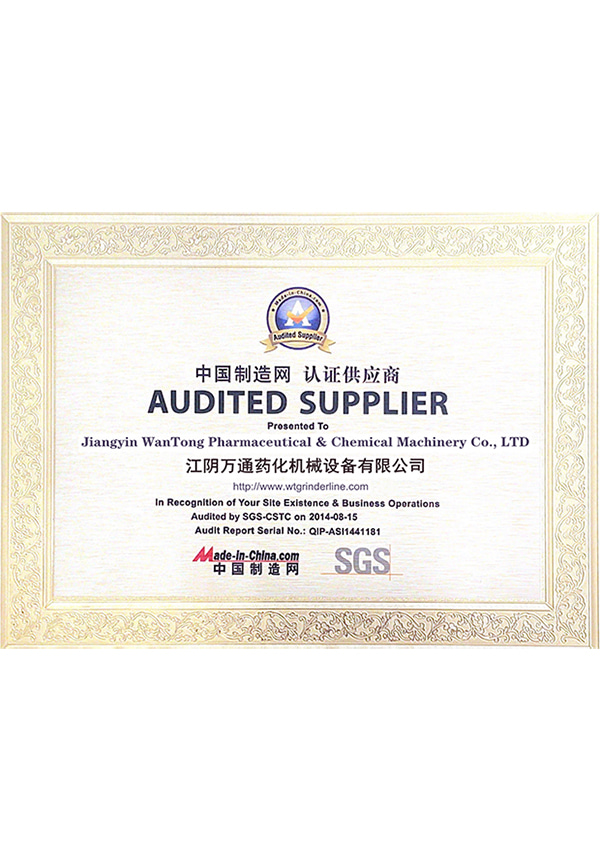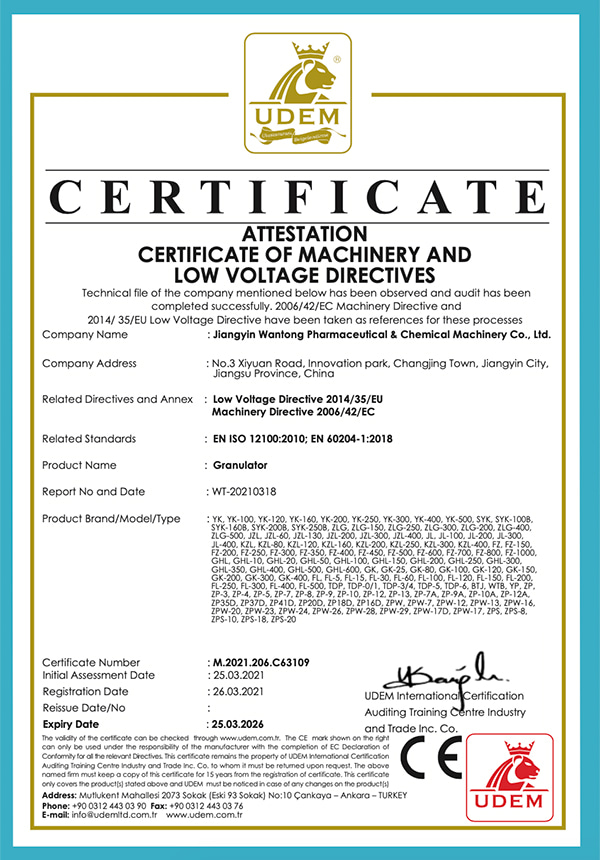Качающийся гранулятор Производитель
-

Wyk Chemical Granule Decillation Swing Granulator
Качающий гранулятор широко используется в фармацевтической промышленности, химической промышленности, продовольственной промышленности, п... -

Syk Double Cylinder Type Swing Granulator
Двойной цилиндр гранулятор может превратить мокрый порошок в частицы. Его также можно использовать для быстрого раздавливания заблокирова... -

Wyk одноцилиндровый колебания качающийся гранулятор
Гранулятор колебаний широко используется в фармацевтической промышленности, химической промышленности, продовольственной промышленности, ...
Swing Granulator - это устройство, которое может превращать смешанные порошкообразные материалы в частицы, а также сухие материалы в форме раздавливания в желаемые частицы. Он подходит для грануляции сухого объемного сырья в фармацевтической, химической и пищевой промышленности, а также других нерегулярных частиц, вырабатываемых увеличением текучести посредством грануляции. Под положительными и отрицательными последствиями барабана оборудование насильно проходит через сито, делая его частицами.

О нас
Честь
-
 Честь
Честь -
 CE
CE
Новости
-
Новости отрасли 2025-10-09
А двойной конусный блендер имеет явные преимущества и ограничения по сравнению с ...
Просмотреть больше -
Новости отрасли 2025-10-01
Электрический Лотковые сушилки Преимущества: Точный и стабил...
Просмотреть больше -
Новости отрасли 2025-09-22
Ленточные блендеры являются одними из самых универсальных промышленных смесительных устройств. Ра...
Просмотреть больше -
Новости отрасли 2025-09-19
Мельничное оборудование играет жизненно важную роль в различных отраслях промышленности, от сельс...
Просмотреть больше
Расширение отраслевых знаний
What are the options for dust control and containment when using a swing granulator?
Controlling dust and ensuring containment during the operation of a swing granulator is crucial for maintaining a safe and healthy working environment, as well as for environmental compliance. Here are some common options for dust control and containment when using a swing granulator:
Dust Collection Systems: These systems capture and remove dust particles from the air. They can be connected directly to the granulator's discharge point or to the entire operation area to capture dust generated during the granulation process.
Enclosed or Covered Granulator: Enclosures can be built around the granulator to contain dust within a confined space. This not only helps in dust control but also provides a safer operation by shielding the machinery.
Wet Scrubbers: In some cases, where dust is a significant issue, wet scrubbers can be used to remove contaminants from exhaust gases, which can then be safely vented into the atmosphere.
Ventilation and Air Filtration: Proper ventilation in the working area can help to disperse dust particles. Air filtration systems can be installed to clean the air before it is released back into the environment.
Negative Pressure Systems: These systems create a negative pressure within the granulator enclosure, which helps to prevent dust from escaping into the surrounding area.
Cyclones and Separators: Cyclone separators can be used to separate dust particles from the air. They work by creating a centrifugal force that throws the dust particles against the cyclone wall and into a collection area.
Dust Suppressants: In some cases, dust suppressants or binders can be added to the material being granulated to reduce dust generation.
Proper Material Handling: Ensuring that materials are handled correctly and that transfer points are sealed can help to minimize dust generation.
Local Exhaust Ventilation (LEV): LEV systems can be installed at the point of dust generation to capture and remove dust before it spreads into the work environment.
Use of Dust Barriers: Physical barriers can be used around the granulator to help contain dust and direct it towards collection points.
By implementing these dust control and containment measures, facilities can effectively manage dust generated by swing granulators, ensuring a cleaner and safer work environment.




